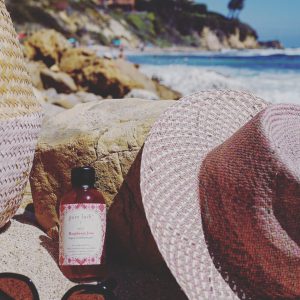Why is it so important to ferment your kombucha for at least twenty-one days? Like the moon. Kombucha works in a cycle that is dependent on time to become full of health benefits. Things like, antioxidants, properly active probiotics, significantly more beneficial acids and significantly less sugar. For some perspective, Cornell University found that, during the first 7 days, kombucha is about 80% Candida yeast and it retains 100% of the original sugar.
It’s not truly healthy kombucha until the sugars have been converted into the beneficial components, like probiotics (good for your gut) and beneficial acids (good for detoxification). If you drink kombucha that is fermented less than 21 days, you are mostly drinking sweet tea and yeasts.
From a Cornell University study –> How is it possible that sugar is still so concentrated at the 7-15 day mark? Here’s how: In the first stage of fermentation, the yeast consumes the minerals from the tea to produce enzymes that separate the sugar into glucose and fructose. At the 7-day mark, that’s as far as the process has gone. The sugar is easier to digest, but hasn’t diminished in concentration. By the 15-day mark, the yeasts and bacterias are just beginning to eat/diminish the sugar content (3.3 teaspoons (14 grams) of sugar per cup (8 ounces) remaining at that point) this means the majority of beneficial probiotics and acids don’t begin to be produced until after the 15 day mark. By 21 days, it’s “properly pro-biotically active” and by 30 days there is almost no sugar left.

“My SCOBY is so fast/ strong” it gets sour really fast.
How could I ferment for 21 days? Theres a good chance the SCOBY is actually just old and has many layers. Every batch the SCOBY grows new layers and Acetobacter (most dominant bacteria in the SCOBY and the one responsible for making acetic acid – the acid that makes it taste like strong vinegar) takes over and starts to make you tea vinegar, instead of kombucha. This is why you should always peel off and use only the top layer of the SCOBY and compost the rest.
Another way, to fix the “too sour” is by, choice of tea and sugar ratios. It’s possible to reduce the sugar amounts when making kombucha by almost 1/3. Instead of 1 cup (250 grams) per gallon (4 liters) use only 2/3 a cup (170 grams). Don’t reduce the sugar more than this, or it won’t work. It’s also possible to use honey or maple syrup on a gram to gram ratio. For example: If you normally use 500g of sugar you can use 300g of sugar and 200g of honey to get the same effect. The taste may be a bit different and might require you to change your techniques a bit, but the results will be worth it. Honey is great to soften the sour and also, much better for you than sugar! Just make sure to use a wooden spoon with your honey. 🙂
Lighter, softer teas like white and some green blends, certain darjeeling’s and oolong’s will have less Catechins. This will generally mean a softer ferment. You can also blend in herbal teas, but avoid anything that has sugar like currants, dried berries, etc… This will increase the sour. Brewing tea properly and always using a fresh SCOBY, will result in a pleasant pH, good aromas and a soft delicate taste after twenty-one to thirty days. And significantly more healthy kombucha.
Don’t believe the hype. Not all kombucha’s are created equally.
